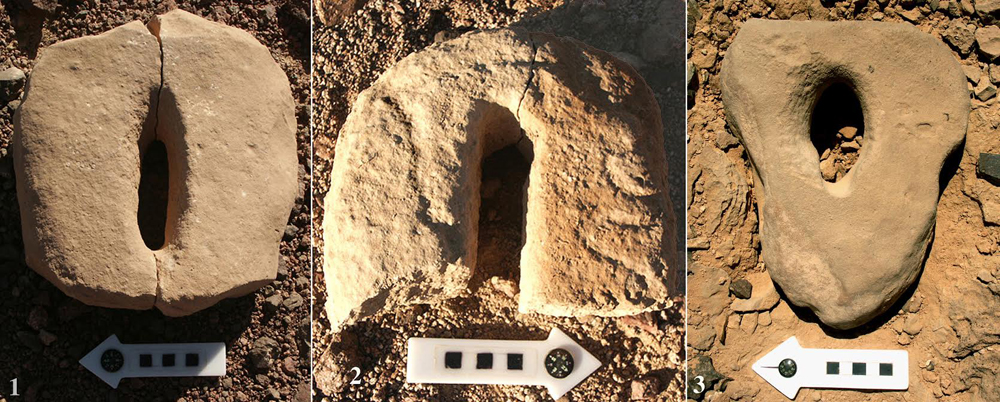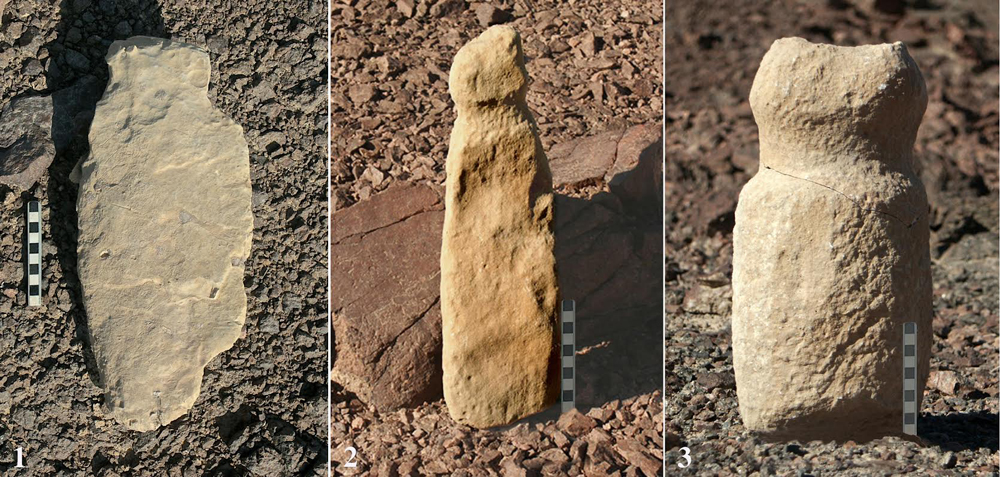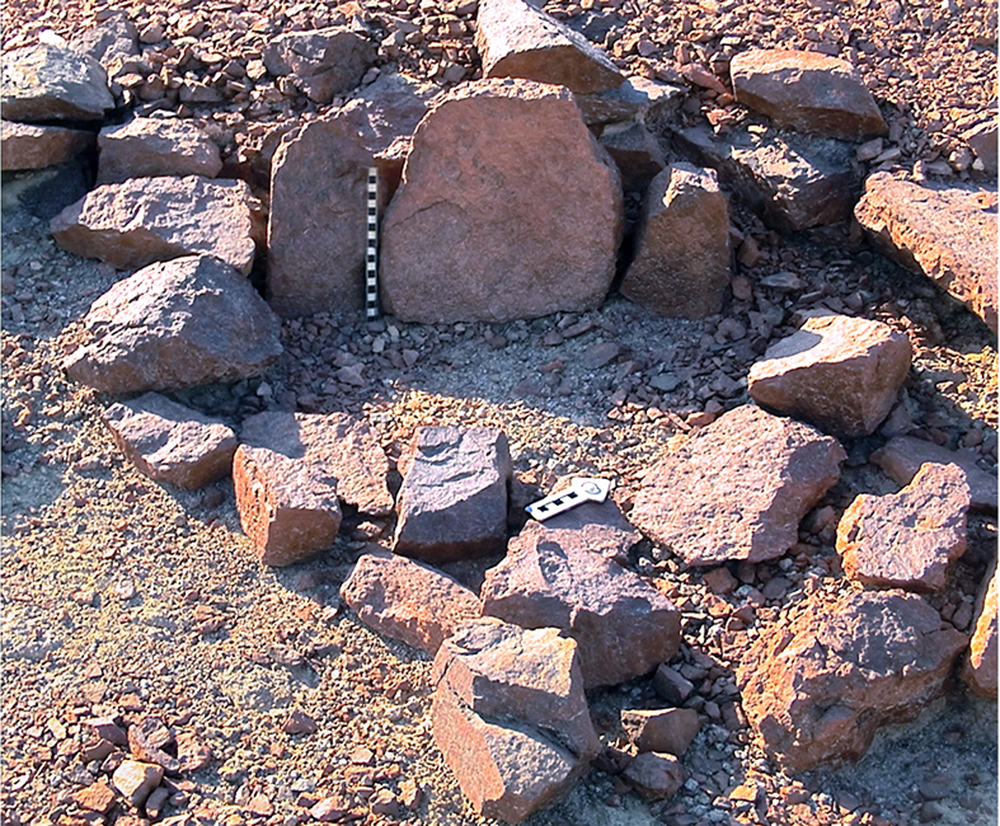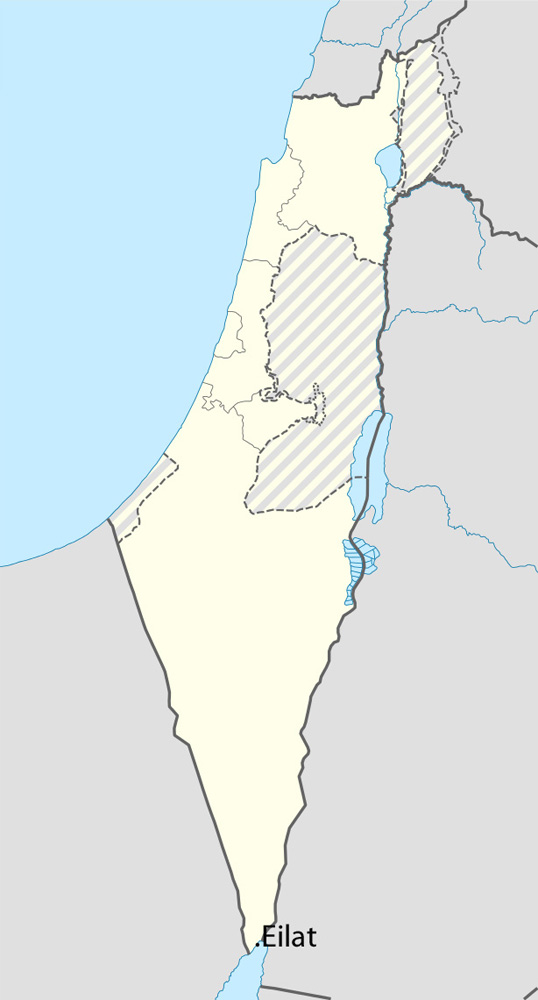Photos: 100 Cult Sites Discovered in Eilat Mountains in Israel
A team of archaeologists have discovered 100 "cult sites" in the Eilat Mountains, an extremely arid part of the Negev Desert in Israel. Archaeologists aren't sure what types of ritual activities may have been practiced at the sites. Though based on animal bones found there, they think animal sacrifice was one of them. Check out these photos of the newfound sites. [Read full story about the cult site discovery]
Fertility symbols
The cult sites date back around 8,000 years and contain a variety of stone structures and artifacts. Fertility is one important symbolic aspect of these sites. The site seen here has a penis-shaped installation pointing toward the remains of a stone circle. Researchers say that the circle, in turn, represents the female reproductive organs. (Photo Credit: courtesy Uzi Avner)
Stone vulva shapes
Many examples of stones with holes cut into them were found at the site. Some of the holes are in the shape of the female vulva, suggesting these structures also symbolize fertility, the researchers said. (Photo Credit: courtesy Uzi Avner)
Buried carving
Humanlike stone carvings were also found at the 100 cult sites. They reach up to 46 centimeters (1.5 feet) in height. In one instance a carving was found buried within a circle, an act symbolically associated with death. (Photo Credit: courtesy Uzi Avner)
Get the world’s most fascinating discoveries delivered straight to your inbox.
Standing stones
In this image three standing stones, with holes cut into them, look over the remains of an oval installation. Many standing stones were found at the 100 new cult sites and they reach as tall as 80 centimeters (2.6 feet). (Photo Credit: courtesy Uzi Avner)
Cult stones
The remains of a stone structure found at one of the cult sites are seen here. (Photo courtesy Uzi Avner)
Desert mountains
The Eilat Mountains are located just north of the modern-day city of Eilat. Researchers note that the mountains receive only 20 mm (0.79 inches) of rain, per year, on average, an amount that would have been somewhat higher 8,000 years ago. (Credit: Map courtesy Wikimedia, modified by Owen Jarus)

Owen Jarus is a regular contributor to Live Science who writes about archaeology and humans' past. He has also written for The Independent (UK), The Canadian Press (CP) and The Associated Press (AP), among others. Owen has a bachelor of arts degree from the University of Toronto and a journalism degree from Ryerson University.








